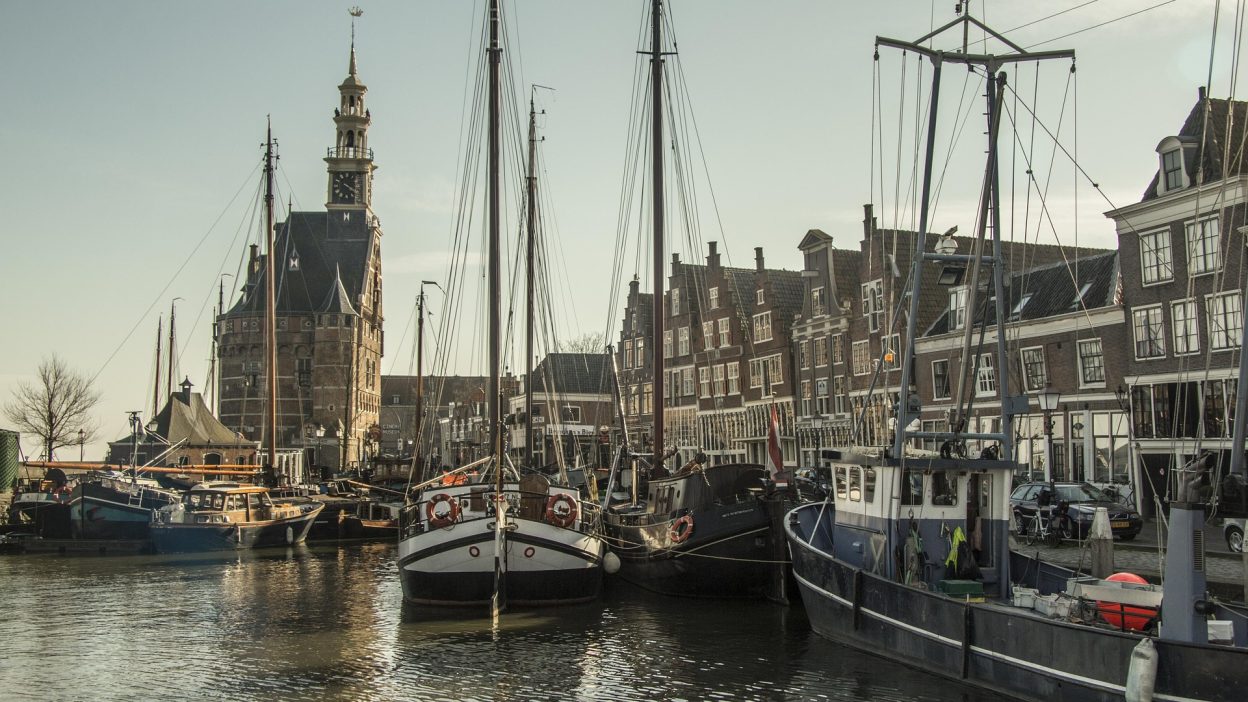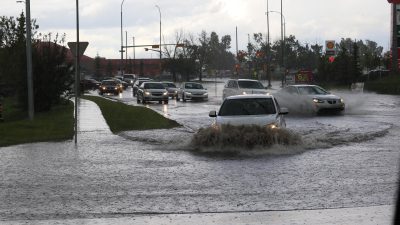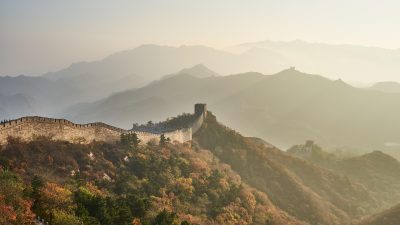A Disaster Lost to Time
The year 1099 was a time of unparalleled devastation as the North Sea unleashed a flood so severe that it altered the course of history for two nations—England and the Netherlands. What began as a seemingly natural storm quickly escalated into one of the deadliest floods of medieval times, consuming entire villages, drowning thousands, and leaving the survivors in an endless struggle for survival.
With little to no flood defences, the people of medieval England and the Low Countries stood powerless against the relentless surge. Towns vanished overnight, farmlands turned into watery graves, and economies that depended on trade, agriculture, and coastal settlements crumbled.
This catastrophe remains one of history’s most overlooked disasters, yet its impact was far-reaching, influencing the development of water management, urban planning, and disaster preparedness for centuries to come. But was this a natural calamity, or did human negligence exacerbate the destruction? And, with climate change intensifying extreme weather today, could such an event happen again?
1. The 1099 Flood: A Disaster Lost to Time
Despite being one of the earliest recorded floods in European history, the 1099 flood remains largely forgotten. Unlike later documented disasters, the lack of extensive medieval records makes it difficult to determine the full scale of destruction. However, what is known is that this flood was no ordinary event—it was a relentless surge of death and chaos that left entire landscapes unrecognisable.
The 11th century was a period without advanced flood control systems, making coastal towns and villages extremely vulnerable to storm surges. Medieval settlements lacked the infrastructure necessary to hold back the violent force of the North Sea, and when the flood struck, it obliterated everything in its path.
Coastal England and the Low Countries suffered immensely. Vast agricultural lands were swallowed, trade routes were cut off, and ports that had once been bustling with merchants became submerged wastelands. Entire generations were lost, yet the flood never received the recognition it deserved in historical accounts.
This disaster was a wake-up call that went largely unheard. But why has history erased such a monumental tragedy? Perhaps because, at the time, wars, power struggles, and plagues overshadowed the suffering of coastal dwellers. But for those who survived, the 1099 flood was an apocalypse—one that shaped the future of flood management.
2. The Science Behind the Storm: What Caused the 1099 Flood?
The 1099 flood was not a singular event, but rather a deadly combination of environmental and meteorological factors that aligned at the worst possible time. Historical references suggest that it was triggered by three main elements:
- Violent Storm Surges – A massive North Sea storm created monstrous waves, which crashed into the coasts of England and the Netherlands.
- Unseasonal Heavy Rains – Continuous rainfall for weeks before the flood caused rivers to overflow, saturating the land.
- Rising Tides & Lunar Cycles – The flood coincided with unusually high tides, which amplified the destructive power of the waves.
During this period, Europe was experiencing the Medieval Warm Period, an era marked by unpredictable weather patterns and rising sea levels. Coastal towns and low-lying farmlands were already at risk, but without protective dikes or embankments, the floodwaters had nothing to stop them.
With the storm raging through the North Sea, towering waves surged inland, turning towns into lakes and leaving people clinging to rooftops, trees, and debris. Those who failed to reach higher ground perished instantly, their bodies lost to the tide.
3. A Death Toll Beyond Measure: The Human Cost of the 1099 Flood
The devastation of the 1099 flood was immense, with thousands of lives lost and entire communities wiped out. Due to the lack of precise medieval records, the exact death toll remains uncertain, but historians estimate:
- Thousands Perished Overnight
People were caught off guard as the floodwaters rushed through villages, drowning men, women, and children in their homes. - Entire Settlements Vanished
Some towns were so completely obliterated that they were never rebuilt, disappearing from history entirely. - Crops and Livestock Were Annihilated
Farmlands turned into saltwater wastelands, killing crops and animals, leading to mass starvation in the aftermath. - Widespread Disease and Famine
The lack of clean drinking water and food led to outbreaks of disease, taking even more lives than the flood itself. - Mass Exodus of Survivors
With nothing left behind, survivors fled inland, permanently abandoning their ancestral lands.
The flood not only destroyed lives but also erased entire cultures. Villages that once stood as flourishing trade hubs were buried beneath the sea, never to return.
4. England vs The Netherlands: Two Nations United in Tragedy
Though separated by the North Sea, England and the Netherlands suffered equally, with the disaster affecting them in different ways:
- In England, the flood devastated coastal settlements in Norfolk, Suffolk, and Lincolnshire. These areas, dependent on farming and trade, suffered economic decline for years. Ports were submerged, and vital trade routes with Europe collapsed.
- In the Netherlands, the damage was even greater. Large parts of Friesland and Holland were permanently submerged, altering the region’s geography forever. Unlike England, which had higher inland regions, the Netherlands had nowhere to retreat, making the scale of displacement immense.
For both nations, the flood was a harsh lesson in the importance of flood defences—one that would take centuries to properly address.
5. The Church’s Verdict: Divine Wrath or Human Failure?
During medieval times, natural disasters were seen as divine punishment, and the 1099 flood was no exception. The Church was quick to declare the catastrophe as God’s anger upon a sinful world.
Priests and religious leaders called upon survivors to repent, organising mass prayers and processions. Many believed that the flood was a test of faith, and donations to the Church increased significantly in the aftermath.
However, as time passed, some began questioning whether human negligence played a role. Could better planning and stronger flood defences have lessened the destruction? Or was it simply inevitable?
6. The Aftermath: Surviving in a Waterlogged World
The days and weeks following the flood were just as deadly as the disaster itself. Survivors were left in a drowned world of destruction, facing:
- Diseased floodwaters contaminating drinking supplies
- Dead bodies floating through streets, spreading sickness
- Mass starvation as crops and livestock were wiped out
- A sudden surge in crime, as desperate survivors looted for food
Many tried to rebuild, but the damage was too extensive. Some coastal villages were never resettled, while others relocated further inland to escape future floods.
7. Why the Flood Was Unstoppable: Infrastructure Failures
Several medieval vulnerabilities made this disaster far deadlier than it should have been:
- No Dikes or Barriers – There was nothing to hold back the sea’s advance.
- Poor Settlement Planning – Towns were built dangerously close to flood-prone areas.
- No Early Warning Systems – People had no time to evacuate before the waters arrived.
- Ignored Climate Risks – The gradual rise in sea levels was not considered a long-term threat.
8. The 1099 Flood’s Impact on History: How It Changed Coastal Defences
Although the 1099 flood is largely forgotten, its effects shaped the future of both England and the Netherlands. Before this disaster, there were no structured flood defences in these regions. People built their homes dangerously close to water without considering the risks. However, after witnessing the devastation caused by the flood, there was a gradual shift in how medieval societies approached water management.
The Netherlands: The Birth of Flood Control
- The Dutch were hit the hardest in 1099, and they soon realised that if they wanted to survive, they needed stronger defences against the sea.
- This disaster laid the foundation for what would eventually become one of the most advanced flood control systems in the world.
- By the 12th century, Dutch communities began building dikes, earthen embankments designed to hold back floodwaters.
- Over time, these systems became more advanced, turning the Netherlands into a global leader in water management.
England: A Wake-Up Call for Coastal Settlements
- In England, the flood forced coastal towns to rethink their infrastructure.
- Many villages were moved further inland, while others built small-scale embankments to prevent future disasters.
- However, it would take centuries before England fully developed proper flood defence systems.
- The medieval mindset still saw floods as acts of God, slowing the process of adopting scientific flood management.
This flood set the stage for future developments in water management and urban planning. While it took hundreds of years for these ideas to fully materialise, the 1099 flood was the event that made people realise they had to act.
9. Could It Happen Again? Are We Prepared for a Repeat of 1099?
One of the most terrifying realities about the 1099 flood is that it could absolutely happen again. In fact, with the modern climate crisis, we are now more at risk than ever of facing similar or even worse flooding events.
Why Are We at Risk Today?
- Rising Sea Levels – Due to global warming, sea levels are rising, increasing the risk of storm surges like the one in 1099.
- More Powerful Storms – Climate change is making hurricanes, typhoons, and storms stronger, meaning floods today could be even deadlier.
- Overpopulation in Coastal Cities – Unlike in 1099, when villages were small, modern cities like London and Amsterdam are now built along the coast, putting millions of lives in danger.
- Failure to Adapt – Despite advancements in flood management, some areas still lack proper infrastructure to defend against large-scale flooding.
Modern Flood Defences: Have We Learned Our Lesson?
- The Netherlands is now home to the Delta Works, one of the strongest flood protection systems in the world.
- England has constructed the Thames Barrier, which helps protect London from flooding.
- However, not all coastal cities have these protections, and some areas remain just as vulnerable as in 1099.
The real question is whether governments and communities are taking the threat seriously. If history has taught us anything, it is that ignoring the warning signs can lead to catastrophe. The 1099 flood was a brutal reminder of nature’s power, and with climate change making these events more frequent, the world must be better prepared than medieval Europe ever was.
10. A Forgotten Disaster, But a Warning for the Future
The 1099 flood was a catastrophe of immense proportions, yet it has been largely erased from historical records. Unlike the well-documented disasters of later centuries, this medieval flood has faded into obscurity—but that does not mean its lessons should be ignored.
What Did the 1099 Flood Teach Us?
- Nature Does Not Spare the Unprepared – Without proper defences, entire towns and civilisations can be wiped out overnight.
- Floods Are Not Just Natural Disasters, But Also Human Failures – A lack of preparedness and poor urban planning often make floods far deadlier than they should be.
- Ignoring Past Disasters Puts Us at Risk – Just because this flood happened centuries ago does not mean it cannot happen again.
Why We Must Remember the 1099 Flood
- It was one of the earliest recorded floods in European history.
- It led to the first steps in flood defence systems.
- It serves as a historical warning that climate-related disasters can and will repeat themselves.
The 1099 flood was not just a medieval tragedy—it is a blueprint for what could happen again if we fail to respect the raw, unstoppable force of nature.
Frequently Asked Questions (FAQs)
1. How many people died in the 1099 flood?
The exact death toll is unknown, but estimates suggest that thousands perished, with entire villages wiped out overnight.
2. What areas were affected by the 1099 flood?
The flood devastated coastal regions of England and the Netherlands, particularly in Norfolk, Suffolk, Lincolnshire, Friesland, and Holland.
3. Could a flood like this happen again today?
Yes, due to climate change and rising sea levels, similar floods are more likely than ever. Coastal cities are now at extreme risk.
4. What was the main cause of the flood?
A massive storm surge, combined with heavy rainfall, high tides, and lack of flood defences, created the perfect storm for disaster.
5. How did the 1099 flood influence history?
It led to the early development of flood control systems in the Netherlands and influenced coastal planning in England, shaping how we deal with flooding today.




